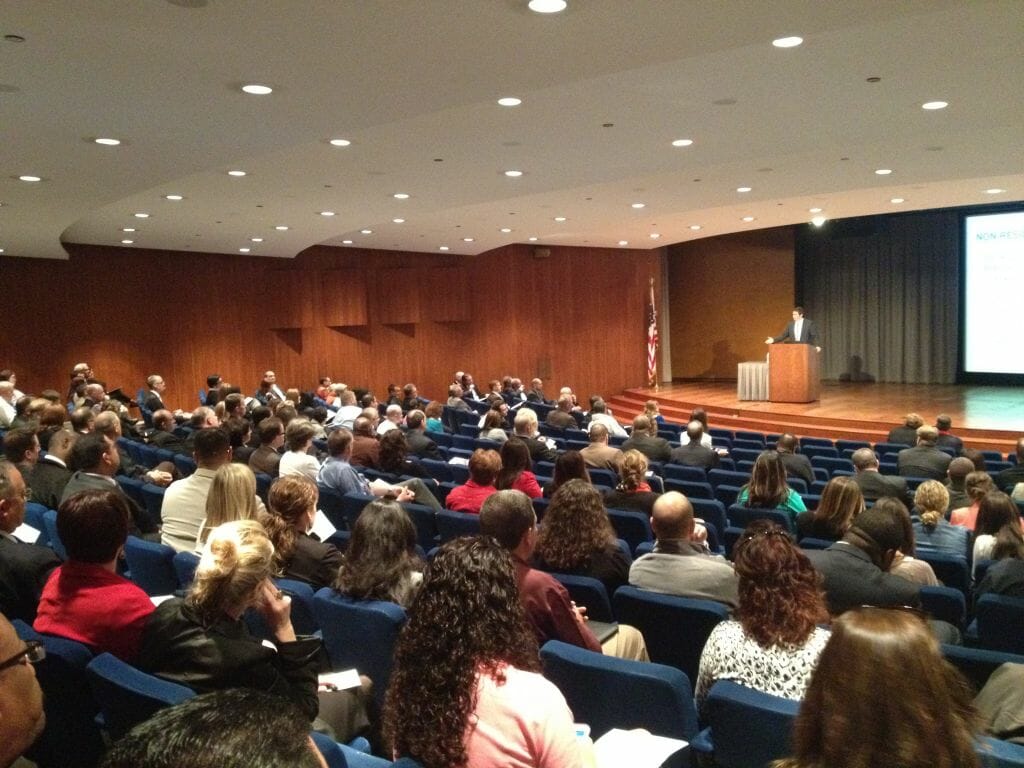How to Effectively Plan Ahead for 2014’s Concealed Carry Act
By BOMA/Chicago Security Committee
Many Chicagoans would be shocked to see a “No Guns Allowed” sign at the entrance of a hospital. To us, this is implicit knowledge.
Richard A. Devine, a Former State’s Attorney and current Partner at Meckler Bulger Tilson Marick & Pearson, spotted a sign with those words outside a Texas hospital during a recent family vacation. He experienced the same surprise that most of us would.
Guns in a hospital? Of course not! So why was this sign posted outside a hospital in the Lone Star state?
The answer lies in the legislation that Illinois was the very last state to adopt – concealed carry.
In July, Illinois passed the Firearm Concealed Carry Act. Illinois will now allow citizens to carry concealed firearms and will begin issuing concealed carry licenses in early 2014.
The Texas hospital Devine visited exemplifies what Chicago’s building owners and managers will need to do by February 2014 – decide whether or not to allow tenants to bring concealed handguns into their buildings.
Unlike Texas, however, Illinois has a long list of buildings and public spaces that are forbidden to allow concealed carry. Visit slides 10 and 11 of this slide deck to review those prohibited areas.
Chicago’s downtown buildings are not one of the concealed carry prohibited areas. Building managers and owners therefore have the right to choose the firearms regulations for their own buildings, just like the hospitals in Texas. BOMA/Chicago held an extensive campaign on your behalf for your right to choose your own concealed carry rules for your buildings. And our efforts paid off!

BOMA/Chicago members at the September 17 Concealed Carry Open Meeting.
Last week, Devine and Assistant State Attorney Brandon Nemec spoke at BOMA/Chicago’s concealed carry meeting in the Chase Auditorium with the sole purpose of informing building owners and managers of their rights under the new legislation.
Concealed carry licenses will become available on January 5, 2014 and licenses will actually be issued beginning in February/March 2014. This means that building owners and managers have approximately three months to decide upon and implement firearm regulations for their buildings.
During Nemec’s presentation, which you can view here, he outlined three immediate steps for all property managers and owners.
1. Determine the concealed carry policy for your building. As concealed carry licenses will be issued in February/March 2014, you would be well advised to put your firearm regulations into place before this time (and ideally before applications go out in January). No hard deadline exists for you to choose and implement your own firearm regulations, as regulations are all handled internally, but your tenants and leaseholders should be given notice of the new regulations before the concealed carry law is rolled out. To effectively implement your building’s policy, tenants should be advised so that they understand and can adapt to the policy.
2. Inform all of your tenants about your concealed carry regulations through mandated signage. If you choose to prohibit concealed carry, then you must conspicuously post a notice of the prohibition at each public entrance in your building. The signs will be standardized 4 X 6 notices and will be prescribed by the Illinois State Police. The Illinois State Police website will publish information on how to obtain signage for businesses once they have confirmed the details through administrative rules process. This link also contains a link to FAQ on concealed carry, which all buildings owners and managers should review.
3. Fully stand by and diligently enforce the regulations you set in place. If you prohibit guns in your building and the prohibition is clearly posted, security and building staff should have a clear policy for communicating it and should be prepared to call the police if an unauthorized gun is brought on the premises. If you do allow tenants to carry a concealed firearm in your building, security and building staff should understand the policy to ensure that a licensee’s rights to lawfully carry the concealed weapon are never questioned or infringed upon.
Because buildings do retain the right to adopt policies concerning concealed weapons, it is possible to accommodate individual tenant preferences. For example, your building may permit concealed carry on the property altogether, but allow certain business tenants to prohibit firearms in their tenant space. Similar posting of notices should be observed in the tenant space if the policy is different than the building’s policy. Your concealed carry regulations therefore do not have to be a blanket prohibition one way or the other, but can be developed through negotiations with specific tenants.
Again, all of these details are outlined on Nemec’s slides and on the Illinois State Police website. Nemec also stressed the importance for building owners and managers to remember that although concealed carry may be prohibited in parking lots under a building’s control, the individual’s vehicle is considered “safe harbor” while the vehicle is located in the parking lot. The weapon must remain locked inside and out of sight (see slide 17 for full details).
There are many complexities to the new concealed carry laws – this is undeniable. But as members of BOMA/Chicago, you have valuable resources at your disposal to help you through the steps you need to take before 2014.
We want to thank all of you who attended our open meeting last week. Please visit this webpage for more concealed carry resources. If you have any questions regarding concealed carry, email Ron Tabaczynski, BOMA/Chicago Director of Government Affairs.
What steps is your building currently taking to prepare for the concealed carry? Share how you are preparing below.

